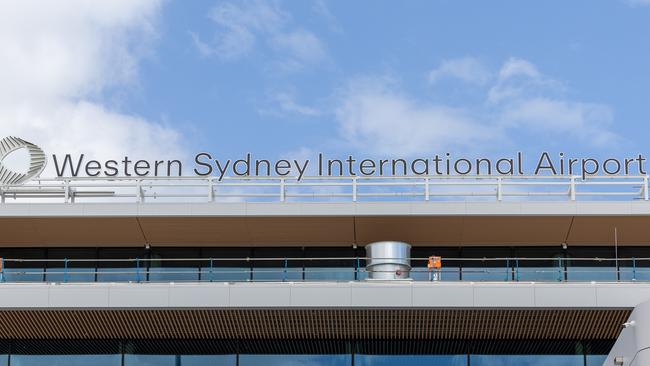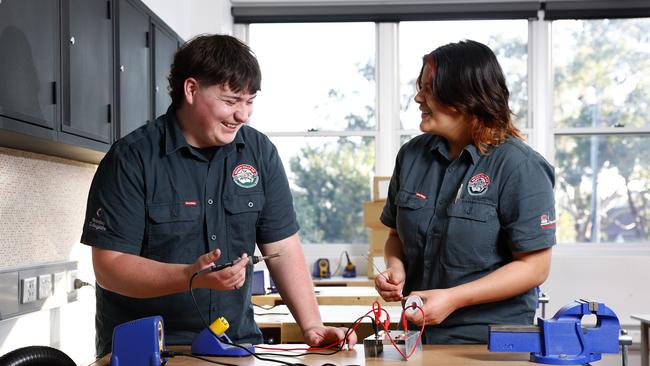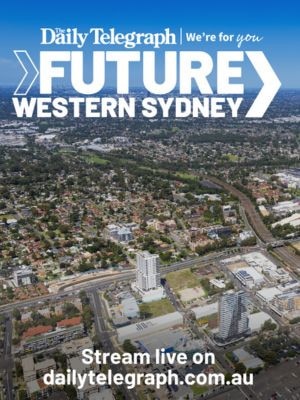Eight areas of the economy critical to unleashing Western Sydney’s unlimited potential
More than 200,000 residents from Sydney’s west commute and contribute their labour to inner Sydney, making the city’s east wealthier at the expense of the west, writes Andy Marks.

Opinion
Don't miss out on the headlines from Opinion. Followed categories will be added to My News.
Imagine if you were responsible for mowing your neighbour’s lawn while yours went to ruin. Worse, they never thanked you for it. Nobody could call that fair.
This is the type of inequity lived by more than 200,000 residents from Sydney’s west who commute and contribute their labour to inner Sydney, making the city’s east wealthier at the expense of the west.
At the Centre for Western Sydney we have developed the metrics to call out this unfairness. It is the first step to turning the tables and ensuring Sydney’s west gets its fair share.
Our Western Sydney Economic Indices covers eight areas of the economy critical to unleashing the region’s unlimited potential. For that to happen, Western Sydney needs to transition from being a peripheral economy, dependent on Sydney, to instead being a core economy, able to thrive in its own right.
Like all economic success stories, this transition starts with jobs.

1. JOBS
Western Sydney needs more jobs.
In Western Sydney there is only 0.81 jobs per worker, compared with the Rest of Sydney where there is 1.24 jobs per worker. This gulf can only be overcome with massive infrastructure investment in Western Sydney. That will create the conditions for investment attraction and job creation. The coming airport at Badgerys Creek is a start.
2. VALUE
Western Sydney needs high value industries.
Western Sydney workers generate half the value of goods and services ($170 billion gross regional product) than the Rest of Sydney ($330 billion GRP). The jobs imbalance has a lot to do with that. Bringing more high-value financial and professional services industries into the west is a way to turn that around, as is more advanced manufacturing. We see green shoots at Parramatta and Bradfield on those counts.

3. INCOME
Western Sydney needs more higher paid jobs.
The average person in Sydney’s west receives $20,000 less income per year than their counterparts across the Rest of Sydney. They are 14 per cent less likely to work from home, and 13 per cent more likely to work in blue-collar job. Improving skills is the most effective way to change that. An 18 per cent improvement in the proportion of Western Sydney workers with a university degree or TAFE qualification would be a start.
4. PRODUCTIVITY
Western Sydney needs more infrastructure.
In every industry other than construction, worker productivity in Western Sydney is lower than the Rest of Sydney. The biggest reason for the difference is the lack of concentrated business activity. Businesses that are well connected by infrastructure forge new supply chain links, improve labour matching, lift the skills base and drive technological uptake. Western Sydney businesses desperately need those connections.

5. PROFESSIONS
Western Sydney needs higher-skilled jobs.
Managers and professionals make up just 36 per cent of Western Sydney’s workers, compared with 54 per cent across the Rest of Sydney. Residents in Sydney’s west are getting qualified faster than comparable regions, but high-skilled jobs are not being created quickly enough in the west to meet demand. A bigger share of investment from programs like Future Made in Australia into Western Sydney will help.

6. QUALIFICATIONS
Western Sydney needs more educational access.
Western Sydney residents are skilling-up fast at TAFE and universities, with 37.5 per cent holding a tertiary degree. But they still lag rates of qualifications across the Rest of Sydney by 22 per cent. The expense of study remains a major barrier for potential and current students in Western Sydney. More fee relief, paid on-the-job training, scholarships and apprenticeships would back-in the region’s positive momentum.

7. PARTICIPATION
Western Sydney needs to mobilise its workforce.
Lack of affordable childcare, carer-responsibilities, insufficient transport connections and poor health outcomes mean a lower proportion of Western Sydney’s work-age population are in jobs compared to the Rest of Sydney. Improved social services and infrastructure would more effectively mobilise the region’s workforce.
8. CREATIVITY
Western Sydney needs arts and culture support.
While it makes up roughly 10 per cent of Australia’s population Sydney’s west gets just 3.4 per cent of federal arts funding. The Rest of Sydney attracts 18 per cent of funds. We are short-changing our most diverse and dynamic region, with consequences for social cohesion.
Sydney’s west doesn’t need hand-outs. It just needs its fair share. The Western Sydney Economic Indices is how we make sure that happens.
Professor Andy Marks is Executive Director of the Centre for Western Sydney at Western Sydney University, a supporting partner of Future Western Sydney.



